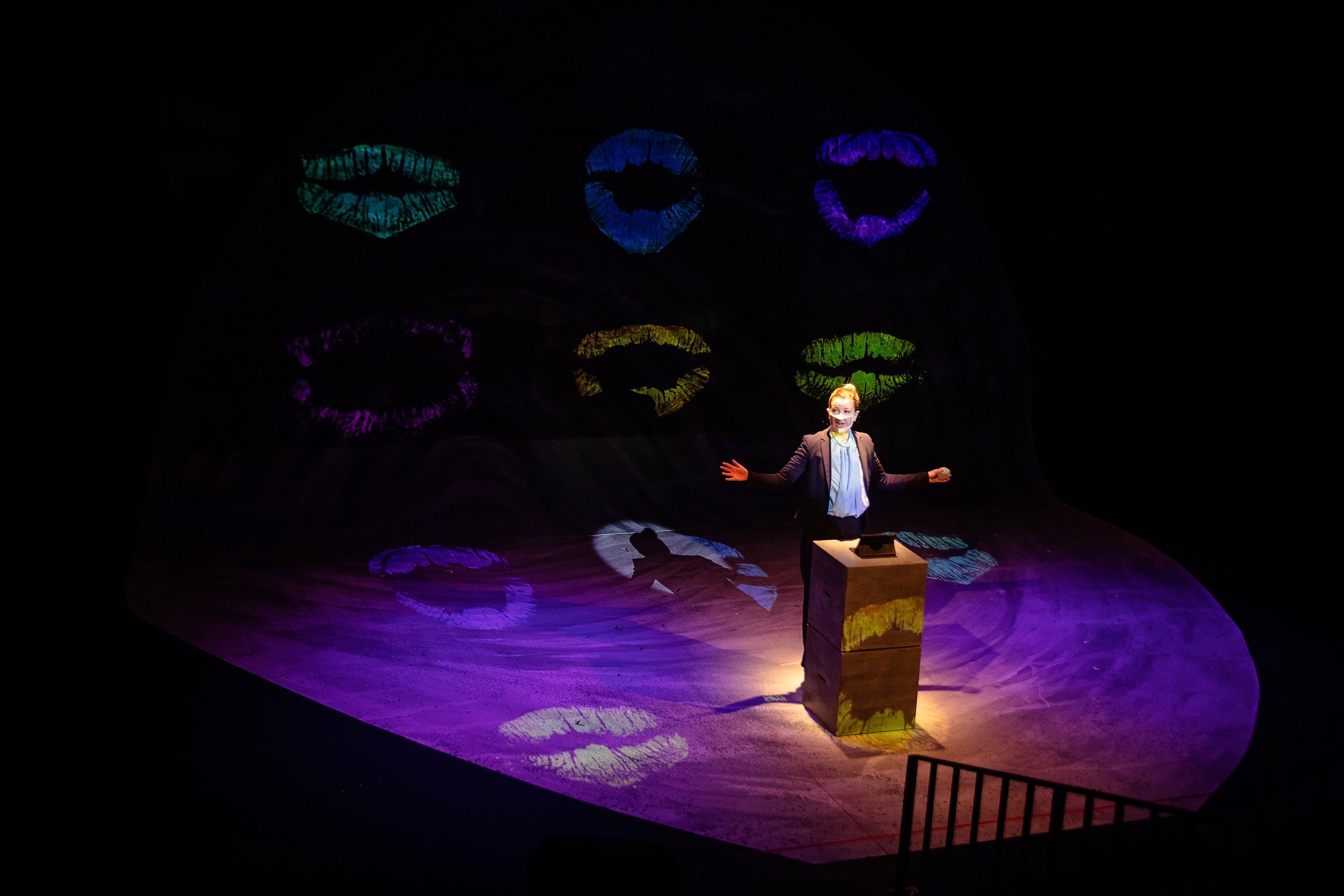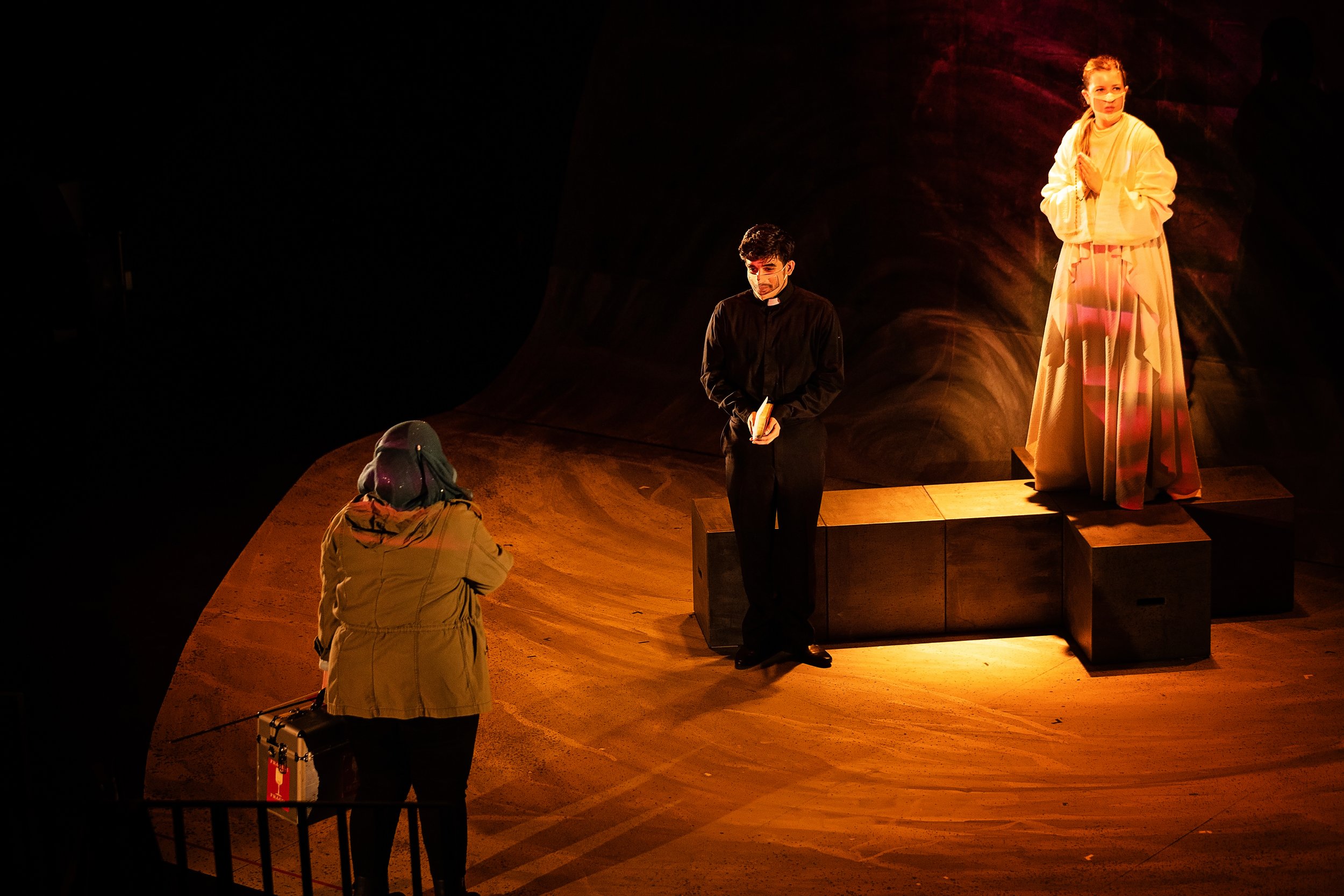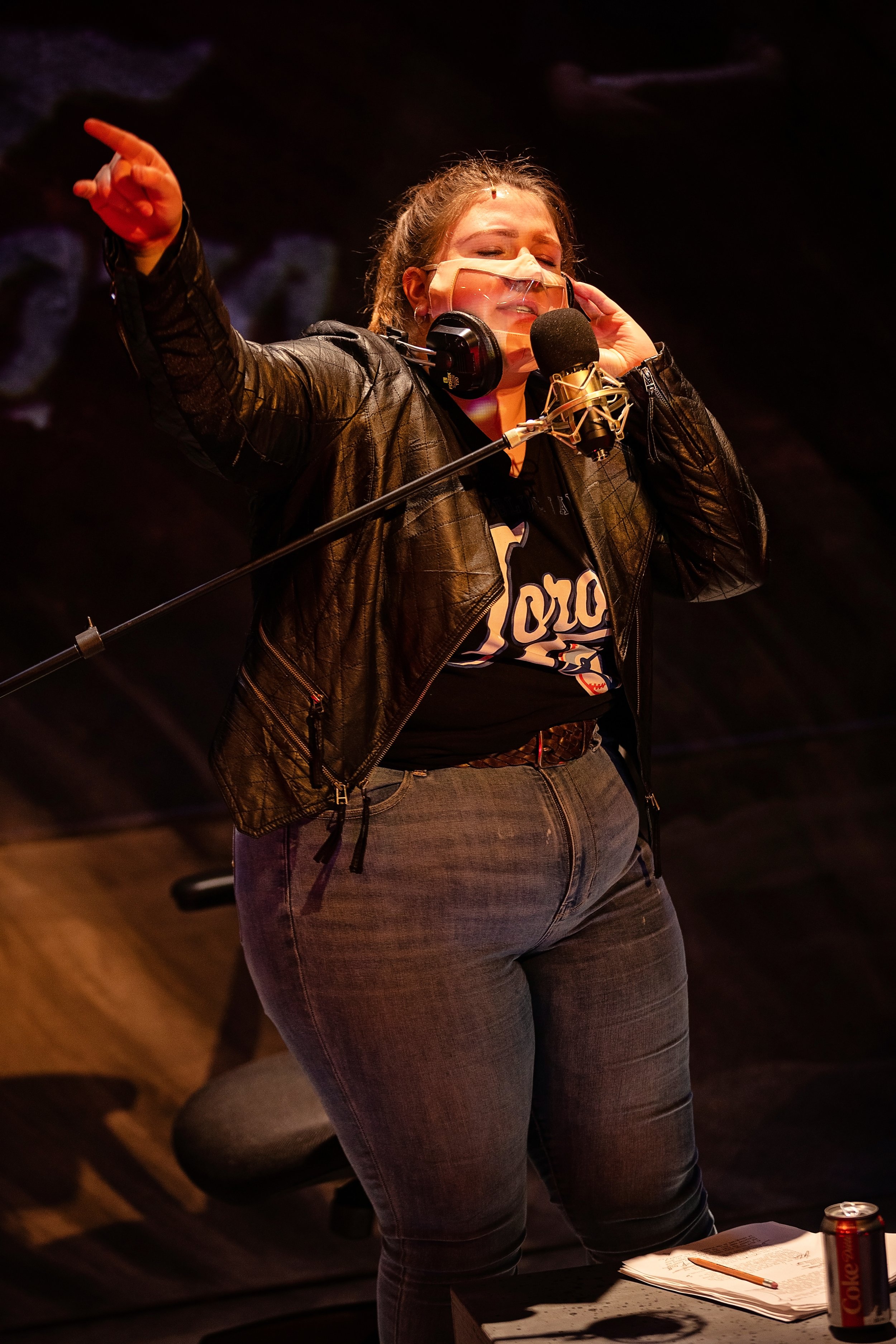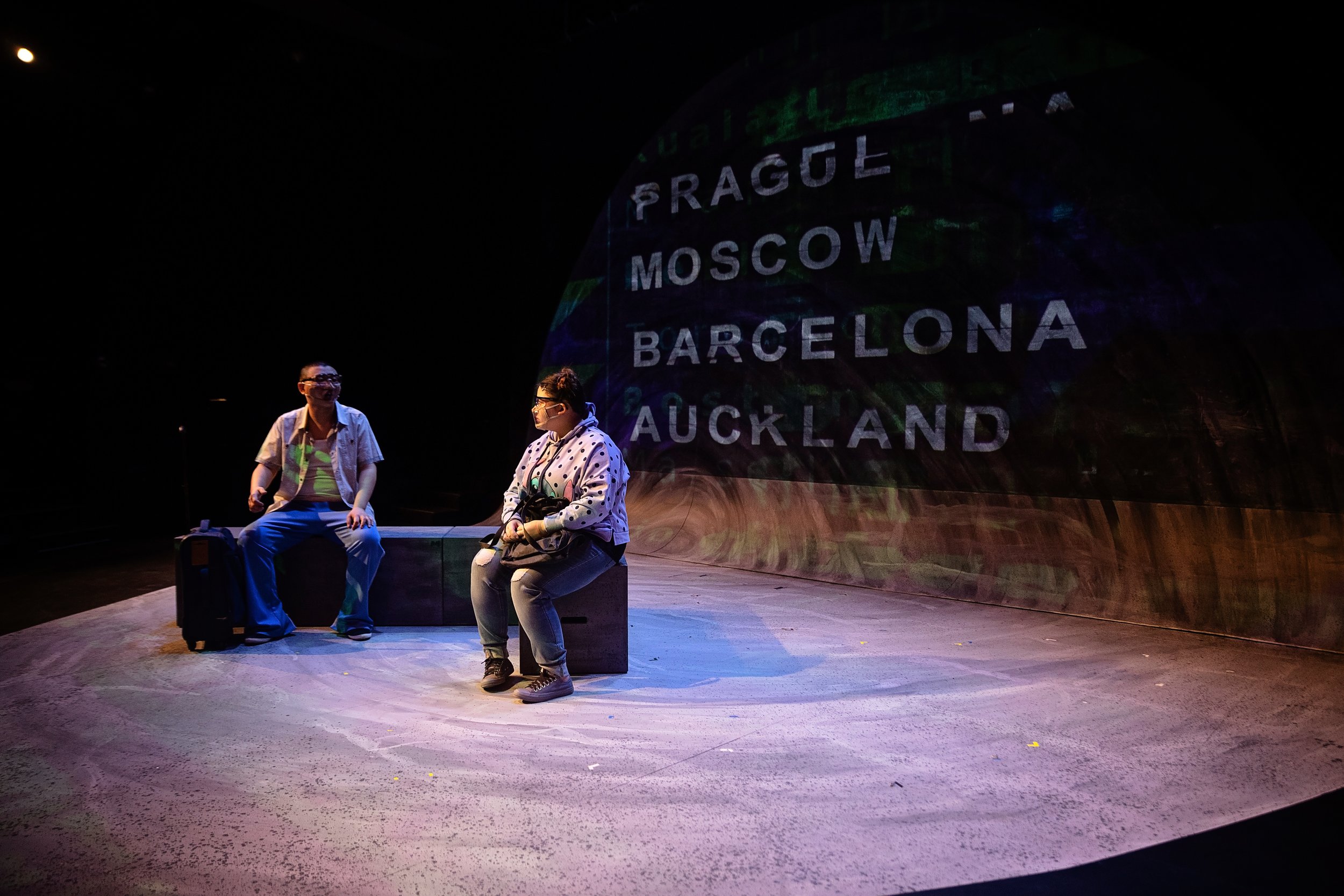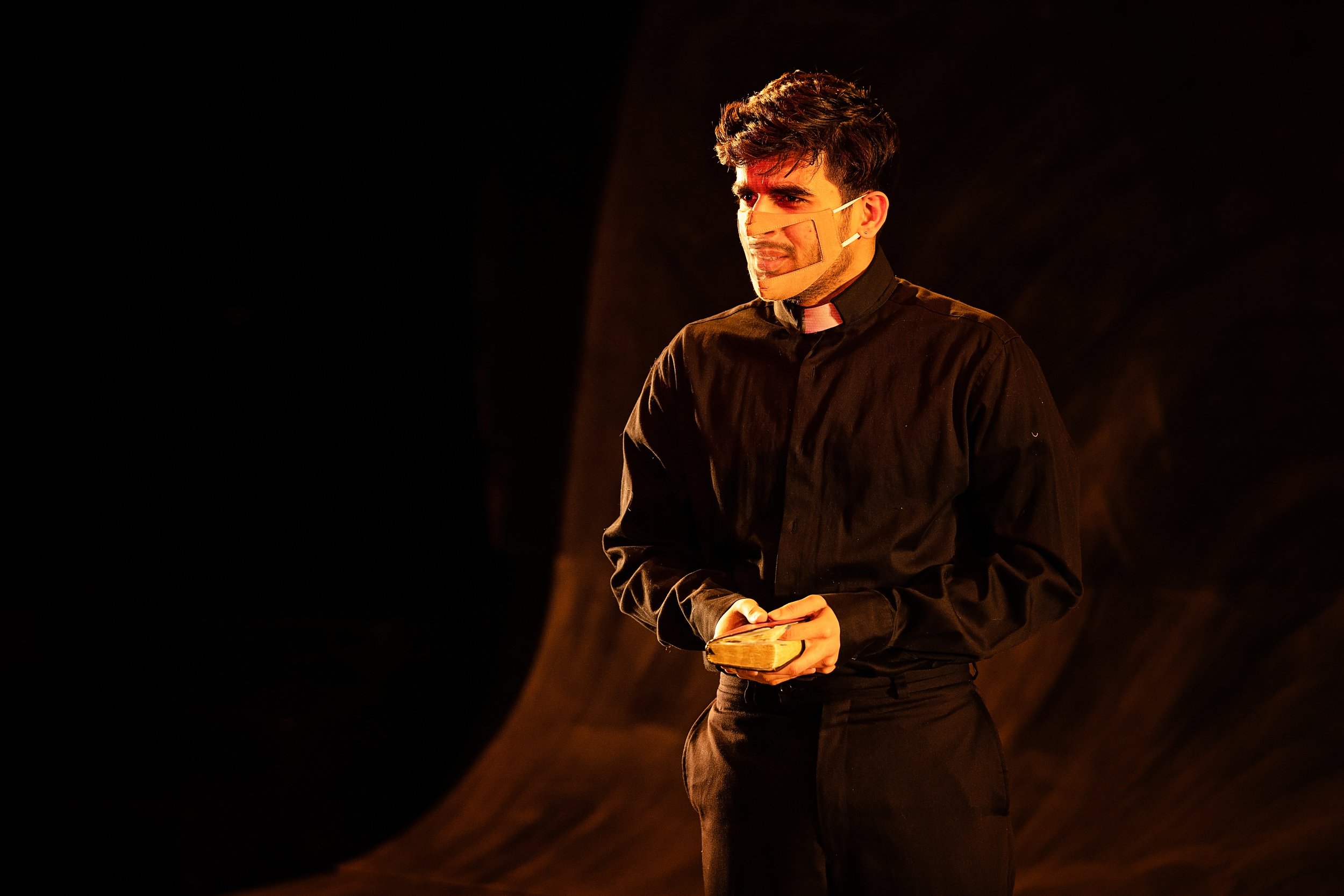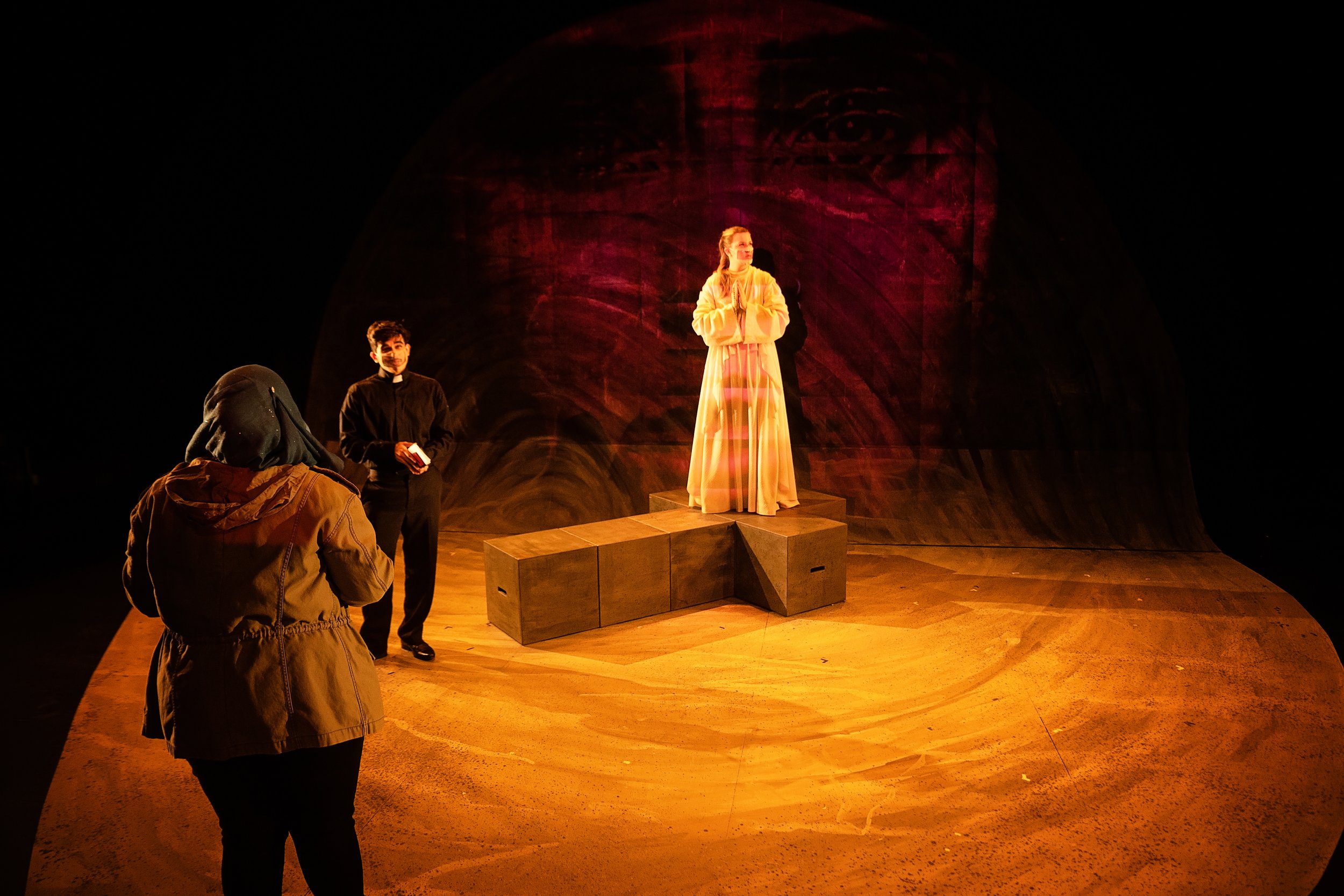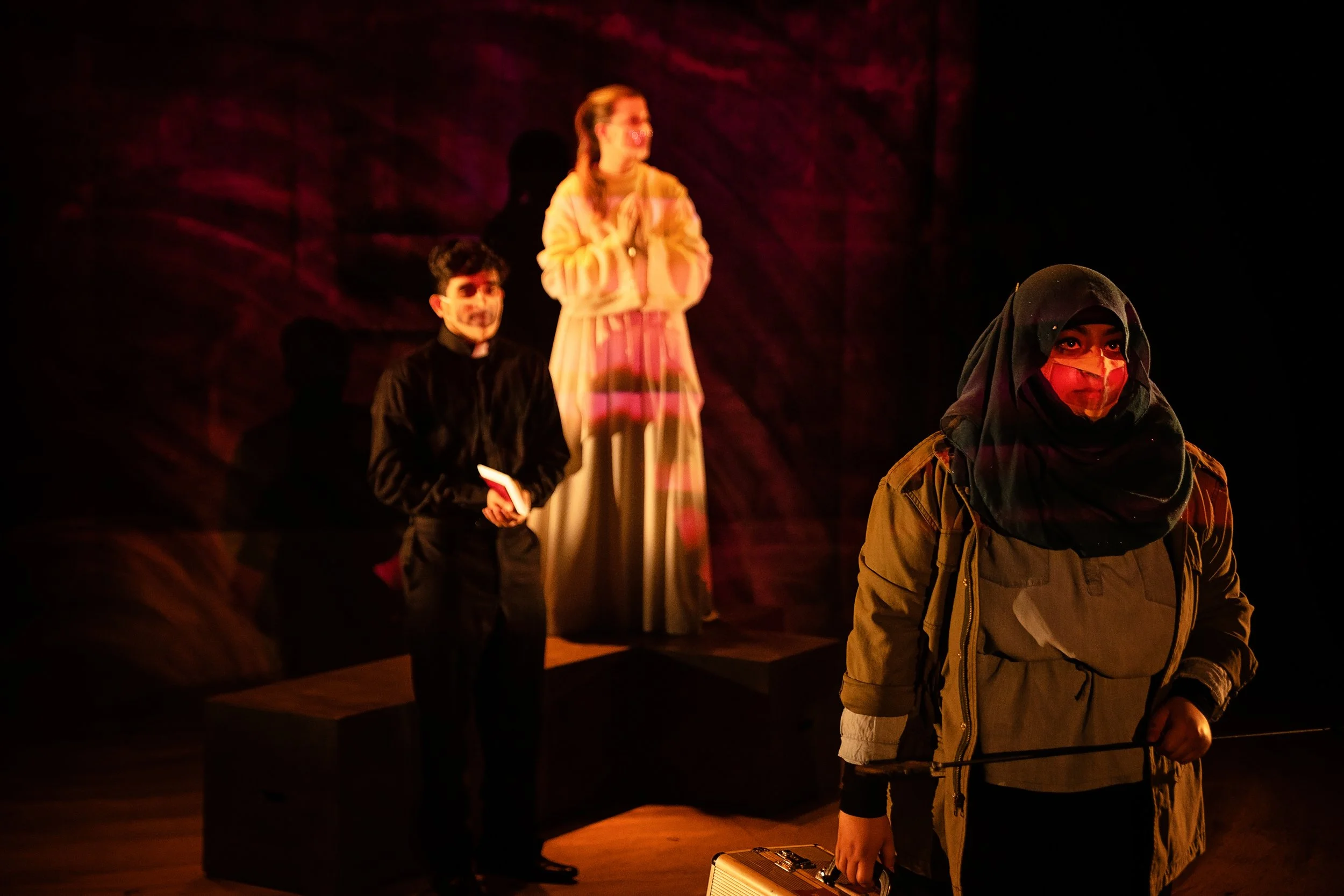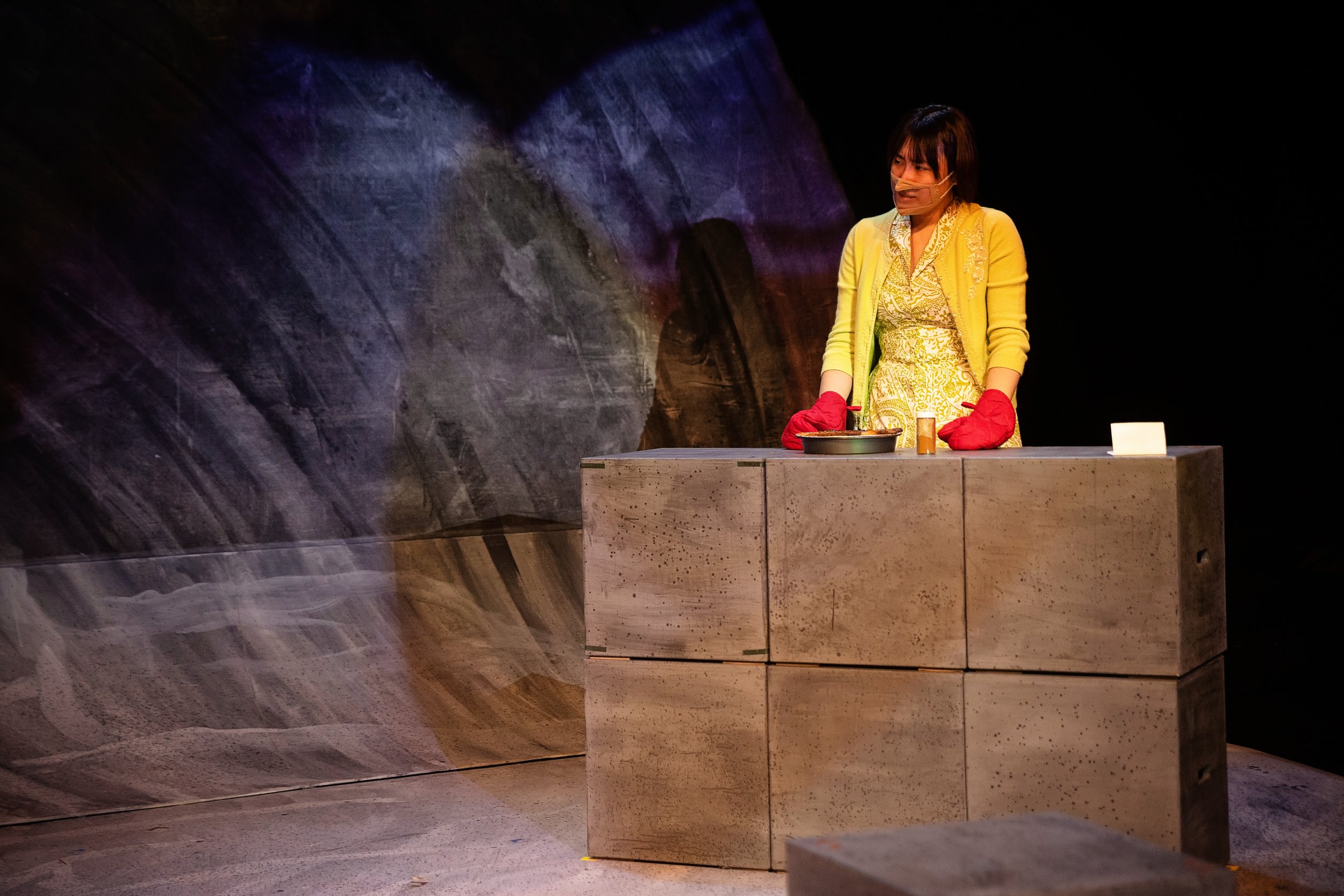CARRIED AWAY ON
THE CREST
OF A WAVE
BY DAVID YEE
LISTEN TO
THE preliminary SOUNDSCAPE
“My dear
In the midst of strife, I found there was, within me, aninvincible love.
In the midst of tears, I found there was, within me, an
invincible smile.
In the midst of chaos, I found there was within me, an
invincible calm.
In the depth of winter, I finally learned that within me, there
lay, an invincible summer. And, that makes me happy.
For it says, that no matter how hard the world pushes against
me, within me, there’s something stronger...”
ABOUT THE PROJECT
We began our work on this project back in the summer of 2020, just after the first wave of the Coronavirus pandemic. Janelle Rainville, our program’s Director of Production and Theatre Operations, and I met with the nine capstone students who would eventually make this project. We met, as everyone does these days, via Zoom, and back then these students had looks on their faces that indicated they were either sad, confused, or irritated with all that was going on. Janelle and I tried to keep the tone of the meeting upbeat. They wanted to know how we could help them complete their capstones, the final stage of learning for all Theatre and Performance Majors. We quickly developed a list of things the students wanted for this project. It was an admirable list; for example, they wanted to stage a script written by an author from a BIPOC community, and they wanted to stage a relevant story about a global crisis, but not a story about COVID-19. Finally, and perhaps most importantly, the students wanted this production to be an in-person experience. Together we built a list of possible plays, and after a couple months of reading and consideration, we voted David Yee’s carried away on the crest of a wave as the most promising play. Yee’s approach to the 2004 tsunami is to script a series of stories that represent glimpses of the human spirit, facing enormous adversity yet driven by a will to come together for reflection and sharing — a desire that our own pandemic-impacted world knows all too well. Spanning the experiences of people from all over the world that this event directly affected, Yee captures vividly the process of moving from trauma through the various stages of recovery over days, weeks, months, and years. Upon reflection, it seemed to me that the best way to approach this global experience was through a surreal lens. In the ebb and flow of trauma, we have tried to stage the unconscious space of dreams existing alongside and within our experience and understanding of reality.
Once the students had chosen this play, Janelle and I went about choosing the right group of artists to invite to collaborate on the project; we considered people who we thought would bring a high quality of work with the capacity to mentor and teach our capstone students. We often hire visiting artists to work with our students in the Theatre and Performance program, but the pandemic’s effect on the professional theatre community meant that we had a larger than average group of excellent artists available to work with us. I cannot stress enough how lucky we have been to welcome Deanna Choi, Howard J. Davis, Denyse Karn, Kirsten Watt, Paul de Jong, Nicholas Timmenga, and Peter McBoyle to work with us. In the fall of 2020, we continued our meetings via Zoom. The discussion among the students as well as the growing production team was inspiring and productive. Despite the second wave of the pandemic, we were feeling confident that we could stage this play for a small audience. The Theatre of Arts, which can seat up to 400 audience members, would be reduced to 50 seats, to ensure the required social-distancing. Janelle Rainville spent weeks developing a highly detailed plan for how the production could happen with in-person instruction and a live audience. Her plan was approved by the UWaterloo Safety Office, and up until the second-half of December, we were developing a vision for a live, in-person production. Then, as has become familiar to all of us, the pandemic changed everything. On December 21st, the provincial public health regulations would enforce a lockdown of all but essential in-person activity in the Waterloo Region. The estimated duration of the lockdown was about a month, so doing any in-person work in January was unlikely. For our artistic team, this meant not only revising how we had planned to work with each other and the students, but revising the design of the production because we learned that even after the lockdown had been lifted, any in-person public presentation on campus was unlikely to happen before September 2021. Janelle revised the plan quickly and repeatedly. In the first month of 2021, our safety plan was revised weekly, daily, and sometimes by the hour. Eventually, we created a plan where we could rehearse in-person with masks, face shields, and regular (about every 15-minutes) disinfectant cleansings. The experience was similar to making theatre in the most unlikely of places and circumstance, like on the moon or underwater, but we were all grateful for the privilege to be able to work together, in the same space, crafting a compelling way to bring David Yee’s stories to life. We were all allowed to be in the same space, but all interaction, either staged or in support of the staging, could only happen at a 2-metre distance. In order to ensure this requirement, Chris Greenhalgh, our program’s Technical Director, created a Social Distancing Stick. Over the next couple of months of rehearsing, and otherwise developing this production, the Social Distancing Stick was often used as a measure of our success. Similar to everyone everywhere, we often wondered if every move we made happened at the appropriate social distance. And sometimes we wondered if we would ever again get used to creating theatre at less than 2-metres apart...Everyone working on this project has steadfastly maintained this social distance throughout the entire process of making this performance. In reflecting on this process, I remembered a writing by Anne Bogart, a director in New York City, about resistance in the process of creating theatre. Bogart states that
“if resistances are a daily given and a necessary ingredient to
the flow of creativity and life, what is the best way to work
with them? Here are a few ideas: first, recognize that the
resistances that present themselves will immediately intensify
your commitment and generate energy in the endeavour.
Resistance demands thought, provokes curiosity and mindful
alertness, and, when overcome and utilized, eventuates an
elation. Ultimately the quality of any work is reflected in the
size of obstacles encountered. If one’s attitude is right, joy,
vigour and break-throughs will be the results of resistance
met rather than avoided.”
This perspective has been such an inspiration to me in these difficult times that it has become a central focus of much of our work on this project. We resist the alienation of the safety measures imposed on us by embracing the challenge such restrictions bring. We realize how these restrictions give us a unique focus and intensity of purpose. Our response to using the social distancing stick becomes a new and innovative way to determine the quality of what we accomplish. Staging resistance to the psychologically debilitating experience of a global pandemic looks like this production; I hope our work of survival and resistance is an inspiration to you. Keep well!
